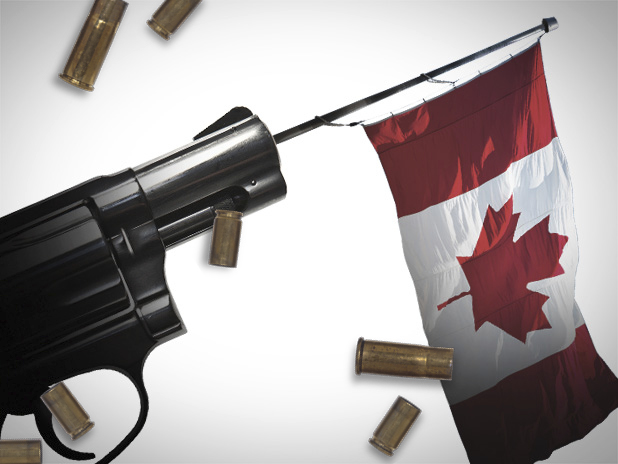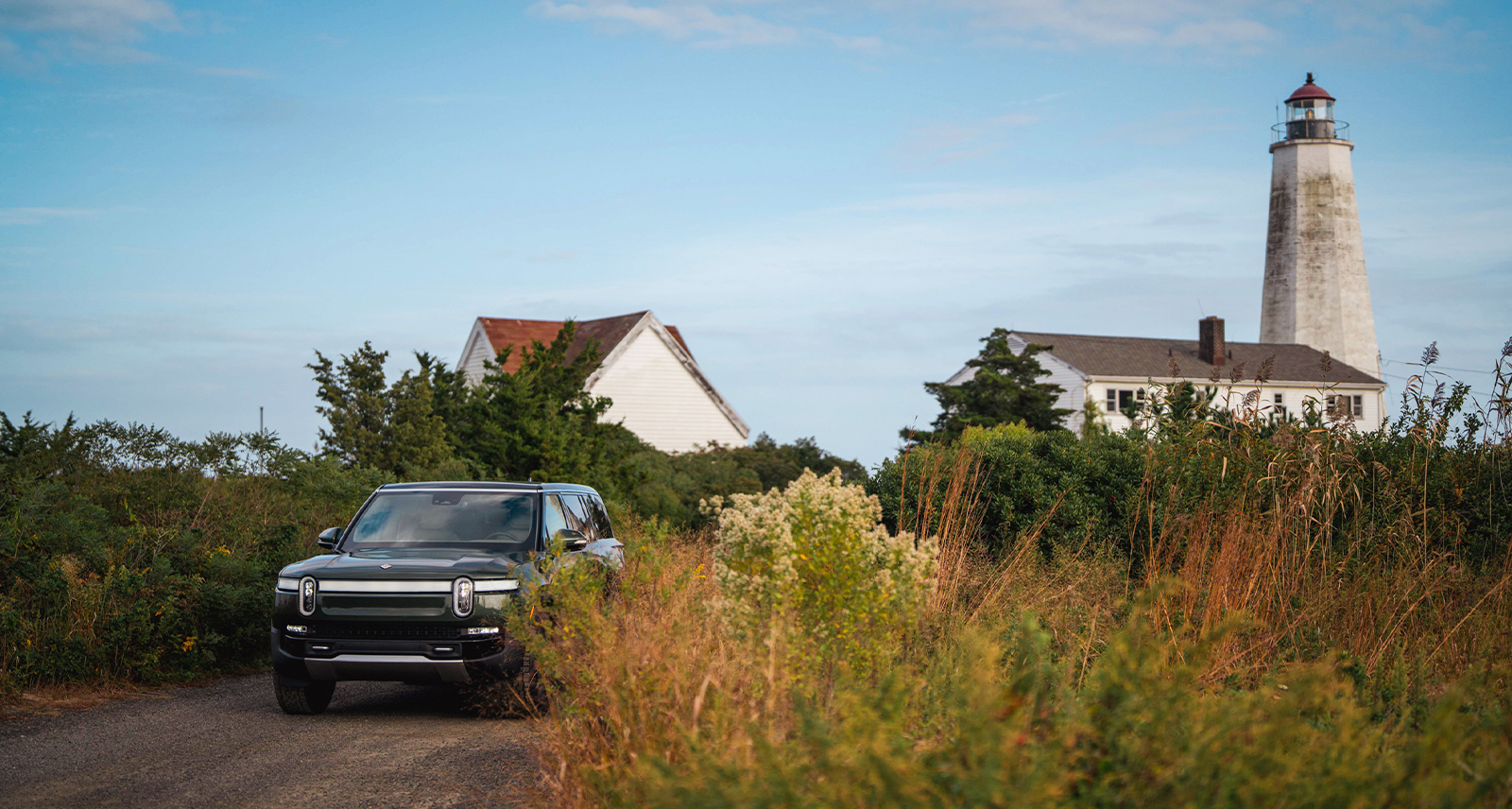Reloaded: The State of Canada’s Gun Culture
***
“When you look around a room like this,” Clare tells me, panning the hall, “what you’re seeing are some of the best people in the country, in terms of their patriotism and dedication to Canada.” That, and lots of guns.
Clare shows me the kinds of hunting rifles his mother and father introduced him to at age 11, a wood-handled Smith and Wesson like the one that became his first collectors piece, and a service machine gun that he dreamed of taking to the Full-Auto Show, the gunny version of aerobatics, where shooters let loose in a Southern Alberta field, filling it with deafening bangs and pillows of smoke. “When I was 18, I saved $1,275 to buy a Vickers gun,” he says, petting the hulking green barrel that required six First World War soldiers to man it. “I put my money down and was told they’d just changed the law and I’d missed the deadline by six months. I was ![]() furious, and I’ve been an advocate for changing gun laws ever since.”
furious, and I’ve been an advocate for changing gun laws ever since.”
 The 53-year-old was born at a turning point. Since the early 1900s, the only restrictions on the books in Canada were to keep guns away from the already marginalized—Aboriginal People, Irish immigrants, French Canadians, according to Arming and Disarming. Gradually, gun laws grew to limit the purchasing and carrying of pistols and, by the 1930s, would include the handgun registry that exists today.
The 53-year-old was born at a turning point. Since the early 1900s, the only restrictions on the books in Canada were to keep guns away from the already marginalized—Aboriginal People, Irish immigrants, French Canadians, according to Arming and Disarming. Gradually, gun laws grew to limit the purchasing and carrying of pistols and, by the 1930s, would include the handgun registry that exists today.
But following the Second World War, a renewed interest in hunting coupled with growing gun ownership led to a perceived spike of injuries and suicides, which turned the attention of lawmakers to all firearms and all firearm owners. By the late ’60s, gun control wasn’t just a fringe issue anymore. With gun violence growing in the United States and a rash of Canadian school shootings in the 1970s, gun control advocates became increasingly vocal, and could be found in the House of Parliament under every party banner.
At the same time, Canada was in the midst of an identity crisis. Perched above the gun-happy USA, advocates and lawmakers here often determined what the country was based on by what it definitely wasn’t—a nation of gun nuts. In 1978, a new bill enshrined, amongst other things, safety storage laws and expanded police seizure powers. It also inspired several gun groups to amalgamate into the National Firearms Association and what they hoped would become Canada’s version of the NRA. (Clare didn’t mail in his membership until 1986, at 24, when the organization reformed following a few dormant years.)

Then, in 1989, after the Montreal Massacre left 14 women dead at École Polytechnique, everything changed. Gun control truly became a national conversation. A new firearms bill, championed by justice cabinet and future prime minister Kim Campbell, included provisions about screening potential buyers and gun and ammo storage that turned the gun lobby against the Conservatives. It would be decades before the party would regain the NFA’s trust—a trust the current government is once again lobbying for, in the form of Bill C-42.
Perched above the gun-happy USA, advocates and lawmakers here often determined what [Canada] was based on by what it definitely wasn’t—a nation of gun nuts.
***
The so-called Common Sense Firearms Licensing Act was first scheduled for debate on October 22, the day Michael Zehaf-Bibeau charged the House of Commons with a lever-action hunting rifle—irony in the cruelest sense of the word. History might have predicted that such an event would call for stricter gun control, but that’s not what happened. The bill quietly disappeared, slipping from the agenda and public discourse, before reemerging out of nowhere in March.
If passed, the bill would ease some gun-owner grievances by merging two types of licences (one to acquire a gun, the other to own and use it), and allowing a grace period between relicensing and some wiggle room for handgun owners transporting the firearm between their homes and clubs. It would also place oversight on provincial chief firearms officers and effectively remove the RCMP’s independent authority on restricted and prohibited weapons.
![]() However, Liberal Public Safety critic Wayne Easter, who supports some but not all of Bill C-42, says this item will instead give the justice minister power over prohibited and restricted classifications, thereby making them susceptible to lobbyists such as the NFA. “It becomes a decision based on political pressure, rather than evidence-based decisions.”
However, Liberal Public Safety critic Wayne Easter, who supports some but not all of Bill C-42, says this item will instead give the justice minister power over prohibited and restricted classifications, thereby making them susceptible to lobbyists such as the NFA. “It becomes a decision based on political pressure, rather than evidence-based decisions.”
***
“Funny huh?” says Clare about C-42’s resurrection as we stalk the gun show. He’s cocking his brows, grinning slyly, playing coy because he knows what I know—what anyone who’s been paying attention knows—that it’s related to the NFA’s sudden decision to pull out of hearings on another bill, C-51. Three days before the lobby was scheduled to testify against the anti-terror bill, it pulled out. A few days later, the gun bill was back at the house. Coincidence? Clare, in between nerdy giggles, will  only say that the NFA shouldn’t be used as a stick to beat Harper. But the suggestion from many, including MP Easter, is that there was some sort of quid pro quo to resuscitate C-42.
only say that the NFA shouldn’t be used as a stick to beat Harper. But the suggestion from many, including MP Easter, is that there was some sort of quid pro quo to resuscitate C-42.
If true, it’s about all the influence the NFA exerted on the gun bill, as it was shut out of consultations, says Clare. Instead, a lobby seat on the firearms advisory committee was occupied by the Canadian Shooting Sports Association president Tony Bernardo—the other guy in a suit jacket at the gun show. Circumnavigating the hall, they share a cordial but awkward “hey” as we pass the CSSA’s booth, just as Clare is boasting about his organization’s 75,000 members—triple that of the Ontario-based CSSA.
“Our association is focused on legislative results,” Bernardo later tells me. “The real work of changing laws happens legislatively, and that’s where our focus has been. We’re in Ottawa, we’re in the committees, we’re in the rooms. ‘Cause quite frankly, the first rule of lobbying is: be there.”
The NFA, for its part, spends a lot of time at the Supreme Court instead. Two recent setbacks for gun control and tough-on-crime legislation—one denying the Quebec government access to the firearms registry, another striking down mandatory sentencing for restricted or prohibited firearms possession—were funded by the NFA and defended by its lawyer, Solomon Friedman. This makes the organization, in Friedman’s words, “2-0 at the Supreme Court of Canada.”
Such high-profile cases have been Clare’s modus operandi. He sees a faster path to the Canada he wants through the courts than the benches. When NFA founder Dave Tomlinson died in 2007, some predicted the CSSA would fill its role as the national lobby. The opposite has happened: Clare says that membership has doubled since he took the reins in 2010.
![]() “They’re now the public face of gun owners,” says Brown. “Whereas in the past it was more traditional hunting groups that were not as radical, this current version of the organization definitely copies its approach from American gun groups that are far more strident.”
“They’re now the public face of gun owners,” says Brown. “Whereas in the past it was more traditional hunting groups that were not as radical, this current version of the organization definitely copies its approach from American gun groups that are far more strident.”










